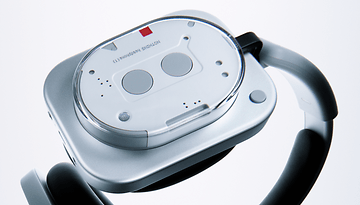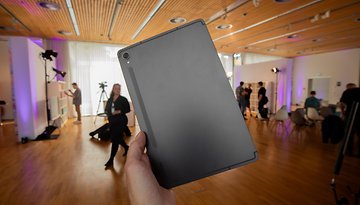Creative SXFI review: Speakers hate this trick
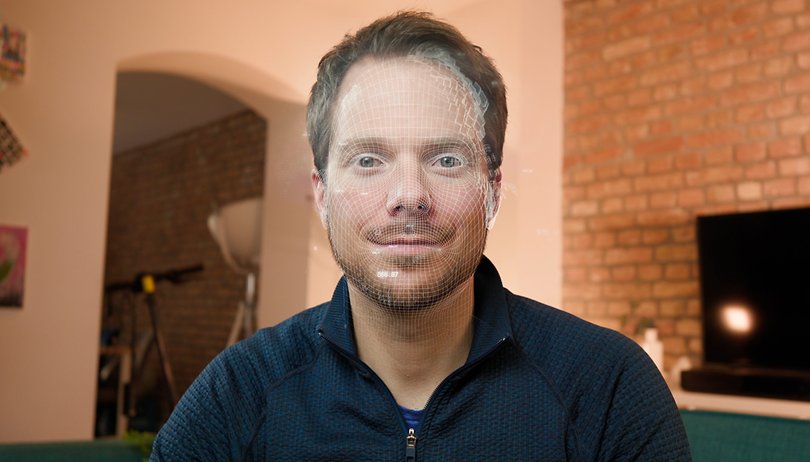

Why do headphones actually sound like headphones and not as "open" as speakers? And why do you need to scan your head using the SXFI app to change that scenario? NextPit checked out what SXFI is all about and reveals how a mathematical trick is able to transform headphones into speakers in terms of acoustics.
If you want to see an all-around look at Creative's SXFI products and how SXFI itself works, we encourage you to watch our video on the subject. In this article about Creative SXFI, you will find the technical aspects explained in greater detail.
Psychoacoustics: How does spatial perception work?
Before we dive into the topic of SXFI, we first need to take a look at how hearing works in the first place, and headphones in particular. To put it simply, headphones consist of two speakers: one for the left ear and one for the right ear. Your ears are the two microphones that capture the sound and transport such signals to our brain, or is it?
In reality, the situation is much more complex. This is because with just two simple microphones in the room, spatial hearing would only be possible to a limited extent. Our brain could compare the audio wave runtimes for instance. Imagine your ears receiving an audio signal simultaneously—it would be impossible to distinguish whether the sound source is located exactly in front of, behind, or above you. The set of all possible audio sources would be a vertical plane running exactly through the center of your head.

Even with a certain difference in delay and a difference in level due to the isolation effect of the head between the two audio signals, the set of all possible positions of the sound source would be a hollow cone. The bigger the difference, the more pointed it would be. However, as we all know: we can not only hear the direction of the sound but sometimes even the distance of a sound source. Why is that so?
Your brain knows exactly how your head and ear look—not on a visual level, but on an acoustic level. This is because all incoming sound waves are refracted on their way into the auditory canal at the skull and especially at the ear, forming reflections and resonances. From the manner of such interactions, your brain can now infer the direction accurately.
What is a Head-Related Transfer Function?
All these described effects which take place between the sound source and auditory canal can be mapped mathematically—using the so-called Head-Related Transfer Function, or HRTF in short. Almost every time you put on a pair of headphones, this "head-related transfer function" bridges the missing acoustic effects so that the sound sounds as real as possible. So why do headphones still sound like they are just that?
Neither your headphones nor your playback device know what your head, including your ears, looks like. Therefore, they rely on a standard HRTF for the average head with average ears. The more unusual your anatomy, the worse this standard HRTF fits you—and the worse the sound quality. Some headphone manufacturers offer the option of specifying your gender in their apps to at least offer a slightly better fit here.
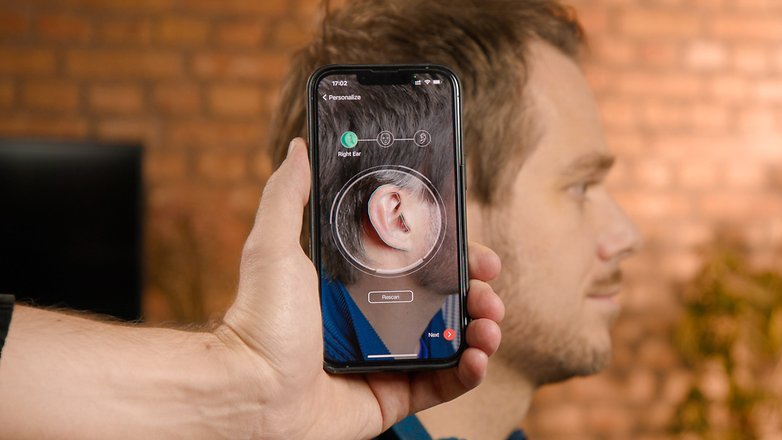
But Creative can do so in a far more precise manner: The trick of SXFI lies in you creating an individual HRTF that is most accurate based on your anatomy. You scan your head and ears, and Creative's smartphone app will use the images to calculate your personal Head-Related Transfer Function. You can now use this HRTF with a range of Creative devices and connected headphones.
SXFI-compatible hardware—and the test
Creative offers four products that are compatible with SXFI at this time. NextPit had the opportunity to test SXFI out using two different soundbars—in conjunction with Creative's SXFI Theatre headphones. In addition, both the Sound Blaster X4 and Sound Blaster GC7 USB DACs also support SXFI technology, as does the Creative XFI AMP headphone amplifier for Android smartphones. More products with SXFI compatibility are expected to follow soon.
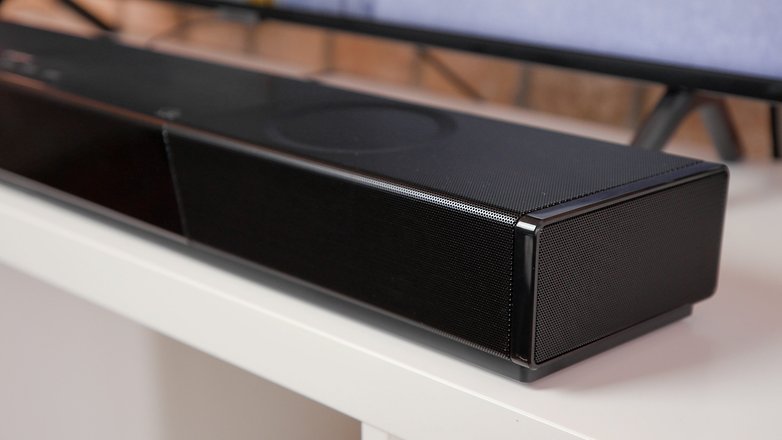
In our review, we first tried out the Creative SXFI Carrier. The large Dolby Atmos soundbar makes quite a bit of noise with its thick subwoofer—and accordingly, the neighbours are happy when users switch to headphones late at night. To use SXFI, you can, for example, pair standard Bluetooth headphones with the soundbar. Our test headphones Creative SXFI Theatre come with their own USB dongle, via which the soundbar and headphones establish their own, particularly latency-free 2.4 GHz connection.
In a direct comparison between the soundbar and the headphones, the guts are naturally lacking. But the sound is much more open with activated SXFI than without it. Movies actually create a wider impression, which we are not used to hear from headphones—and it is also something else than various equalizers and sound processors that simply add reverb effects to the sound.
The difference is most obvious when SXFI is turned off—the sound then seems almost oppressively sterile.
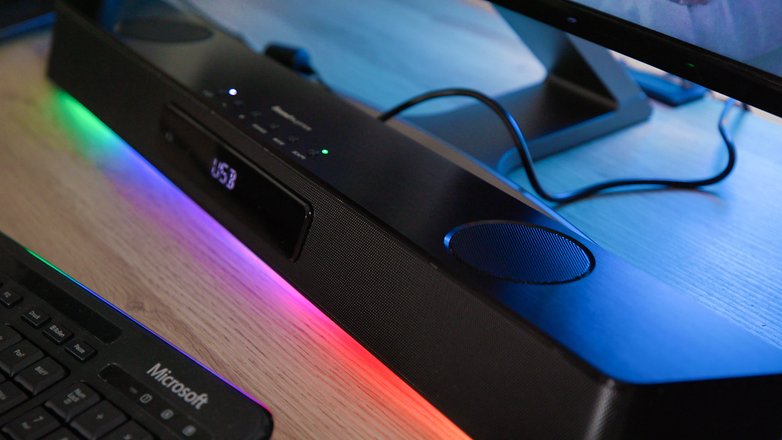
Next up was the Sound Blaster Katana V2. The soundbar also comes with a subwoofer but it clearly targets gamers with its smaller form factor and RGB lighting. Accordingly, there is also an "SXFI Battle Mode", which is supposed to optimize the localization of enemies in games.
When gaming, the difference between "SXFI off" and "SXFI on" is just as dramatically noticeable, and as with the Carrier, the difference is most glaring especially when turned off. It really does seem like you suddenly have sand in your ears, and the soccer stadium that was just alive moments ago now sounds like it's made of cardboard.
The difference between the "normal" SXFI and the Battle mode, on the other hand, is much more subtle. It feels like the "SXFI Battle Mode" is a bit less bombastic and thus allows a better focus on the gameplay in shooters.

By the way, this basic technology is not only available at Creative. In the meantime, Apple also jumped aboard the bandwagon and introduced a mode known as "Personalized 3D Audio" this fall. This mode allows you to scan your head including your ears with your iPhone to generate a customized HRTF for compatible AirPods.
The bottom line is, such technology makes us want more. When it comes to audio, we're still a long way from the end of the line—and I'm sure we'll be hearing and reading more about personalized HRTFs and computational audio in the months and years to come.
This article is part of a collaboration between Creative and NextPit. This collaboration has no bearing on NextPit's editorial opinion.









